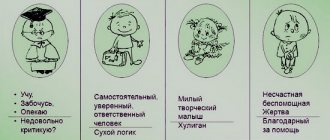A person lives in society from birth, so he constantly interacts with others. As we grow up, our circle of communication expands significantly: at first we contact only our parents, a little later - with our peers, then - classmates, classmates, and work colleagues. Sharing information is an important part of our daily lives. With the help of words and non-verbal means, we convey important messages, share our feelings and emotions with others, and also receive the necessary information. Communication is one of the main ways to gain new knowledge about the world.
Communication deficit
The researchers came to the conclusion that every person has a certain vocabulary that he must spend every day.
Otherwise, people begin to feel psychological discomfort. Many members of modern society, despite the large number of means of communication (mobile communications, Internet, etc.), feel lonely. The consequences of a lack of communication are varied:
- unstable emotional state,
- nervous breakdowns,
- psychoses,
- depression,
- and etc.
At the same time, lonely people are not necessarily hermits who live far from civilization; as it turns out, it is not so easy for the population of large cities with a population of millions to establish truly high-quality and strong social connections.
Stages of communication.
Communication or conversation will be effective or successful when
a) People are satisfied with it;
b) A solution has been found and adopted that everyone agrees with.
Thus, the conclusion suggests itself that in order for communication to be effective, it is necessary to go through four stages of communication.
- Contact.
- Orientation.
- Finding a joint solution
- Decision-making.
Contact. This stage is very important, since it is at this moment that trusting contact is established, which helps to quickly come to a common understanding of the situation, and then to solving the problem. The contact stage can last from a few seconds to several hours. For example, when the interlocutors greet each other and get down to business, then the contact stage is very short. But sometimes people first talk for a long time on abstract topics and only after that get down to business - then the contact stage can be larger than the rest of the communication.
Orientation. At this stage, it is necessary to orientate yourself in the interlocutor, in his problem and orient the interlocutor in your understanding of the problem.
Finding a joint solution. Here the main emphasis is on the jointness of the decision, that is, both interlocutors, as partners, must come to a common decision.
Decision making – in order to emphasize the significance of the decision made. It happens that people have talked, and everyone is left with the impression that everything seems to have been decided, but it is not clear what the decision is and who is responsible. Therefore, at this stage, the most important thing is to clearly state the decision made and make sure that it is understood equally.
Leaving contact or a farewell ritual is also important.
Stage "Contact". "The Angle Rule". Behind any person’s back there is a corner into which it is easy to drive him, but there is no decent way out of the corner. There are only two unworthy ones. The first is to try to win through aggression. But still lose. The second is to agree, give in, and then feel negative emotions, that is, immediately lose. Thus, there are two rules of the corner: do not drive another into a corner, i.e. do not condemn him without sufficient grounds, and do not go into this corner yourself, i.e. don't be offended.
It is impossible to solve a problem without establishing contact!
Rules for making contact.
The first rule is greeting. Three components: calling a person by name, smiling, shaking hands.
The second rule is that eye contact must be maintained 10-15% of the time of communication.
The third rule is reducing social distance.
Fourth, tell the person about his importance.
Fifth, don’t have serious conversations while walking.
Stage "Orientation". To orient a person in your understanding of the problem and to orient yourself in how your interlocutor understands the problem:
You need to be able to speak;
You need to be able to listen;
Pay attention to nonverbal manifestations.
Map of reality. Dogs. Generalization, omission, distortion.
People think through images, sounds and sensations.
- Any word spoken or read evokes an image in them.
- Everyone has their own dog in their head.
- Internal pictures and images are combined in the head into entire films. It is these films that are remembered as memories of what was said or read.
- Words are buttons, a trigger that initiates the process of imagination.
There are three processes involved in creating the space of internal representations in humans.
- Generalization;
- Omission;
- Distortion.
Generalization. Generalizations help us learn quickly. Generalizations can limit our world.
Omissions. We can turn off one or another channel of perception and not perceive all the information available around us at the moment.
Distortion. Without the process of distortion, the world could not change and develop. But this process also has its negative sides. For example, through the process of distortion, people develop fears.
The biggest mistakes people make.
- People often think that others think just like them.
- People are often sure that in any situation there can be only one true perception and only one interpretation of events - their interpretation.
- People often believe that when they say a word, for example, "dog", other people mean and see the same thing as they do.
How to achieve the most complete mutual understanding with others? There are several things to do.
- Firstly, it is to realize the subjectivity of human perception of the world around us.
- Secondly, learn to listen and hear a person.
To do this, you need to master several techniques. One of them is the technique of active listening.
There are three ways to listen:
- Negative evaluation, ignoring and self-centeredness.
- Questioning, making comments about the course of the conversation are passive listening techniques. With their help, you can show your partner that “I am listening to you,” but in reality, listening does not help.
- Active listening techniques.
Need for support
Communication for most people, first of all, is a tool for realizing certain needs.
Over the course of his entire life, a person builds a whole system of social connections: family, friends, work colleagues, acquaintances, etc. Psychologists believe that through communication people feel that they belong to society.
Communication provides several types of social support:
- Informational
- by communicating with other people, we receive new information about the reality around us. - Emotional
- with the help of words we express our feelings and experiences. - Instrumental
- in the process of communication, people may ask for certain assistance (material or moral). - Evaluative
- during communication, our attitude towards certain events and people is compared
Means of communication.
Speech (verbal means) is the most universal means of communication, because with its help information is transmitted most accurately with the least loss.
Non-speech (non-verbal) means - facial expressions, pantomime, postures, gestures, distance between partners
There are also 2 special subgroups.
Extralinguistics - laughter, tears, snoring, etc.
Paralinguistics - sounds that accompany speech.
With the help of speech, a person conveys information, and with the help of nonverbals, his attitude towards it. When there is a contradiction between verbal and nonverbal expressions, people tend to trust the nonverbals.
As we have already said, communication distance—the distance between partners—is a nonverbal factor. There are 4 communication zones
- Intimate zone – 0 – 45 cm.
- Personal (personal) zone – 45 – 120 cm.
- Social zone – 120 – 350 cm.
- Public zone – from 350 cm and above.
It should be noted that the sizes of these zones vary in different cultures. In the Middle East these zones are closer, in the west they are further.
The interactive side is communication as the interaction of people. When entering into interaction, people can be guided by various motives.
- The motive of maximizing everyone's gain. (Cooperation)
- The motive of maximizing one's own gain. (Selfishness)
- The motive of maximizing the gains of others. (Altruism)
- The motive of maximizing one's own gain while minimizing the gain of others. (Competition)
- The motive for minimizing the gains of others
- The motive for minimizing differences in winnings. (Equality)
Communication is successful if the motives of the parties coincide.
Unlimited Knowledge
Researchers have concluded that in many cases the main purpose of communication is to gain experience.
The knowledge of each individual person is quite limited, so often we cannot even imagine the full picture of what is happening. The process of communication opens the door to a treasury of world experience. Reading books, searching for information on the Internet, and live communication with experienced professionals are all valuable sources of information.
In addition, as we know, truth is born in a dispute: many new ideas and ideas are the result of productive communication.
Those who know how to listen to their opponents are much more far-sighted than those who fiercely try to defend their point of view.
By listening to the opinions of another person, you get the opportunity to look at what is happening from the outside and draw the right conclusions.
The concept of communication motives and methods of their research
Chapter Five
Development of communication motives
with peers
The concept of communication motives and methods of their research
Motives are the driving forces behind the activity and behavior of a subject. There is no single view in understanding their nature in psychology. The initial concept for us was proposed by A. N. Leontiev (1975). It naturally follows from the concept of the psyche as an activity that he developed. The latter is the starting point of our understanding of the nature of communication as a communicative activity. The concept of motive is closely related to the concepts of subject of activity and need. “Only as a result of its discovery, the need acquires its objectivity, and the perceived (imagined, conceivable) object - its motivating, activity-directing function, that is, it becomes a motive” (A. N. Leontiev, 1975, p. 190).
The proposed concept makes it possible to rely on an object (or an idea of it), in which the motive is “objectified,” which makes it possible to judge the motives of the subject on the basis of objectively observable facts. This is especially important when studying the motives of young children.
Motives for communication are those qualities of a partner that, when revealed in the process, satisfy the need for communication. Since the motives for communication are inextricably linked with the need for it, understanding them requires revealing the content of the need. The best way to judge the content of a need is through the products of communication, which, according to the concept of M. I. Lisina, represent images of oneself and another person. The essence of the need for communication is self-knowledge and self-esteem of the subject through knowledge of the communication partner. It follows that the subject is encouraged to interact with a partner, that is, they become the motives for communicating with him; it is precisely those qualities of the latter that reveal his own self to the subject and contribute to his self-awareness.
The metaphorical concept of “partner as a mirror” is divided into two functions: 1) identifying the similarity of partners, which allows you to know yourself through knowing the other and comparing yourself with him;
2) identifying your partner’s assessment of your qualities and clarifying them for yourself. The first path involves the perception and assessment of the partner’s qualities; the second is to encourage the partner to respond to the initiative, to capture and take it into account. Hence, the motives of communication should be sought in two types of qualities that are different in function: 1) in the general (similar) properties of the partner and 2) in the ability \
partners to give a response (evaluation) to the manifestations of other participants
4* 99
nicks of communication. The named types of qualities correspond to two main types of communicative motives (partner is a similarity to the subject, partner is an appreciator of the subject).
When analyzing the motives of children’s communication with each other, it is important to take into account the fact that communication is not always an independent activity: it is often only a component of practical or cognitive activity. The child fulfills his basic needs for knowledge of the world and activity. As children develop various types of activities, primarily the leading one - games, they have a need for collective action and pooling of efforts. Therefore, the most important quality that encourages them to joint activity, and therefore to communicate in it, is the ability to coordinate actions, to be consistent. This ability constitutes the third main type of children’s communicative motives (a partner is an equal participant in a common cause).
Communicative motives are closely related to the content of the need for communication. The content of the need for communication expresses the type of objects (manifestations of human qualities) capable of satisfying it. At each level of development of this need, communicative motives represent different options for qualities that can satisfy children’s need for communication. Thus, the need for respect can be satisfied by various manifestations of peers: verbal approval or involvement in the activities of a peer and its creative development.
Preschool age is the initial phase of the development of children’s communication with peers, which rarely appears in its independent capacity and is mainly included as a component in other types of activities, and mainly in the leading one - play. Therefore, the motives of such activities as play, self-service, and initial forms of labor really encourage children to communicate. The motives of communication are subordinated to other motives or act in unity with them.
To study the development of motives for communication between a preschooler and a peer, it is first necessary to examine the objects that encourage him to communicate, that is, to determine and characterize the qualities of a peer as a subject and personality. According to the concept of A. N. Leontiev, as well as the theory of J. Nuttin (J. Nuttin, 1980a), which largely coincides with it in this regard, in order to characterize motivating objects, it is necessary to highlight those actions of the subject that express his desire for motivating objects . These are the actions of a child by which he encourages his peer to reveal some of his qualities (and above all - mirrors, as well as the desire for consistency in actions).
It is necessary to evaluate the driving force of different motives, isolate the leading ones, determine the comparative importance of additional ones, and identify the decisive factor in the development of motives.
There is still no clear picture of the development of a child’s motives for communicating with peers. The works of foreign researchers of the neo-Freudian school emphasize the hostile manifestations of children in relation to each other (N. Feshbach et al., 1972), which the authors explain based on instincts that are only gradually overcome during “socialization” (N. Feshbach et al., 1972; F. Dodson, 1970—cited from: M. Lewis, L. Rosenblum, 1975). Representatives of behavioral psychology see the hope of reward in encouraging children to contact their peers: more often - a gift (pictures, candy), less often - spiritual values (affection, support) (J. Bryan, 1975).
M. I. Lisina (1974 b), A. G. Ruzskaya (1974) identified types of motives for children to enter into communication with adults, called business, cognitive and personal. To study the motives of a child’s communication with an adult, two types of methods were used. In the first of them, situations were created that were close to the natural conditions of communication between a child and an adult, in which the adult addressed the child with his friendly attention, willingness to participate in a common game, and his qualities as an interesting storyteller, after which he provided a choice of several alternative communication opportunities (A.G. Ruzskaya, 1974). With the second type of methods in a play situation, the adult remained passive, expecting the child to take the initiative in making contacts, which were recorded and then analyzed (Z. M. Boguslavskaya, 1974; D. B. Godovikova, 1974; A. I. Silvestru, 1978 ).
The motives for children’s communication with peers were studied differently. The authors analyzed children’s justifications for their attachments to peers (V. A. Abramenkova, 1981; V. K. Kotyrlo, 1979; A. V. Zaporozhets,
T. A. Markova, 1980; T. I. Komissarenko, 1979 a, b; B.S. Mukhina, 1975; T.A. Repina, 1978). However, it is known that even adults, as a rule, are not aware of the motives of their actions (A. Maslow, 1954); This is even more common in children. Therefore, when studying the motives of communication, it is necessary to rely on objective facts of children’s behavior and through facts to establish what motivates preschoolers to communicate.
This chapter uses materials from four studies (D. B. Godovikova, M. N. Mahamanova, 1985; D. B. Godovikova, 1984; R. A. Smirnova, 1981; R. I. Derevyanko, 1983), in which modified the two above-mentioned methods for studying the motives of a child’s communication with adults. The first study (D.B. Godovikova, M.N. Makhamanova, 1985) analyzed the communication of each of 50 children from 2 to 7 years old for 2 hours with each other in the natural setting of a kindergarten (registration was carried out by two observers). We noted situations in which the child’s initiative requests to a peer appeared and considered them in connection with the partner’s response. We identified objects, that is, manifestations of certain qualities that the child was looking for when addressing a peer. Except
In addition, specific actions, verbal and non-verbal, with which the child expressed his desire for a partner were identified.
In the second study (D.B. Godovikova, 1984), the importance of a peer’s qualities as incentives to communicate with him was specifically tested. We created such playful communication situations in which children had to take on a role, reincarnate as carriers of the qualities (motives) inherent in their communication with adults (business, cognitive and personal). Thus, children, playing with toys, demonstrated business skills (masters of the game); they looked at picture books, which created a reason for the emergence of cognitive motives; talked about their tastes, favorite toys, preferred peers, expressing their personal qualities. In several situations, business, cognitive and personal motives were embodied in the behavior program of one child. He acted as an actor, the other as a spectator. The actor got the opportunity to demonstrate his merits to his peer and receive his response, assessment, while the viewer was able to perceive the various qualities of his peer and express his attitude towards them. The situations were structured like a game “on TV” (A. G. Ruzskaya, 1974).
Both participants recorded manifestations of activity that characterize the degree of desire for the qualities demonstrated by a peer: attention to him and an emotional reaction to his activity, proactive appeals to him and response to his answer. The total assessment of these manifestations of the child’s desire to communicate with a partner acting in a certain capacity served as an indicator of the motivating power of the motives of a particular category. The same purpose was further served by the child’s choice of one communication option after familiarizing himself with all the options. Children connected by relationships of affection and friendship were involved in the experiments.
The same preschoolers (50 people) participated in the experiments (second study) and observations (first study), which made it possible to obtain a variety of information about each child.
The third study, conducted by R. A. Smirnova (1981), also used a technique for implementing certain motives of communication in children's behavior programs. The programs were personalized to different children. After the child had experience of all the provided types of interaction with partners, it became clear which one he preferred. The basis for the conclusion about the attractiveness of a particular type of interaction was the change in the child’s attitude towards peers who personified different motives for communication.
The fourth study (R.I. Derevyanko, 1983) compared the motives of a child’s communication with peers and with adults. Co-
1 The work has not been published. 102
Situations were created that stimulated the child to make business, cognitive and personal contacts with both adults and peers.
Research (a total of 5,000 experiments) was conducted with children from 2 to 7 years old in kindergartens in Moscow, Dushanbe, Komsomolsk-on-Amur.
Main categories of motives for communication - with peers in children 2 - 7 years old
We judged the child’s motives for communicating with peers based on an analysis of his communicative actions and those active manifestations of his partner that created a state of satisfaction in the child. In the verbal act, the topic of discussion was revealed, which characterized the need that caused the appeal to a peer, and at the same time the type of action to which the child encouraged the partner was determined: practical, communication of information, attitude to what was heard. This gave us the opportunity to establish for what qualities of a peer the child turns to him, and to identify stable goals that were systematically set by the child. As a result of the analysis of all the materials received, three categories of motives for a child’s communication with a peer were identified, similar to those inherent in his contacts with an adult.
The first and most important category consists of motives generated by children’s need for active activity, which is expressed in preschoolers in role-playing games and is the leading activity for them. A child enters into communication with a peer for the sake of participating in a common game or productive activity, to which he is encouraged by the qualities of a peer necessary for the development of exciting and coordinated action. And above all, these are the skills to create interesting ideas for games, put forward goals and coordinate their goals and actions with other participants. The subordination of the motives of communication of this category to the needs of the common cause allows us to call them business.
During preschool age, children's cognitive interests develop. The child is enriched with new knowledge about the world and the ability to construct a narrative. This creates a reason for turning to a peer, in whom the child finds a listener and connoisseur. The qualities of a peer as a source of information and its connoisseur, which meet the cognitive needs of children, constitute the second category - the cognitive motives of their communication, which is inferior in importance to the first.
The third category included personal motives. The child gets involved in any activity that a peer is engaged in in order to compare his and his capabilities. Here, the role of motives is played by comparable, analogous qualities - one’s own and one’s peer’s, capabilities (skills, knowledge, moral qualities), needs (desires, inclinations). This is the first version of a personal motive, when it 103
directly expresses the need to communicate with a peer, and is not subordinated to other needs. The second version of the personal motive is a peer as a connoisseur of those qualities that the child has already identified in himself as advantages. The child demonstrates his skills, knowledge and personal qualities, encouraging other children to confirm their value. The motive for communication becomes his own qualities in accordance with the property of his peer to be their connoisseur. This motive is also directly related to the need for communication, with the child’s desire to know his capabilities, to confirm his advantages, using the response to them from a peer. Both versions of personal motives embody the qualities of a peer as a mirror in the two functions discussed at the beginning of the chapter.
Knowledge of another person and oneself is accompanied by an assessment of both subjects, as a result of which a stable position is created in relation to oneself and to peers. Three types of positions are possible: equality with a peer, superiority over him and inequality in favor of a peer. A child may develop one type (superiority or equality) or all three types of positions in relation to peers. Uneven positions become sources of different motives for communication. In a position of superiority, the child looks for qualities in peers that confirm her main motive: a peer-appreciator. In a position of equality, the child strives to cooperate and search for common goals, similar activities and self-expression among peers. In an unequal position, the child wants to find in a peer a model or source of goals and instructions for their implementation, as well as his attention and approval. The business motive here is combined with the personal one. Evaluating the actions and qualities of oneself and a peer involves their correlation with the norm. Therefore, we will also classify as personal motives the moral norms identified by children in discussing people’s actions. Children need a more refined understanding of the latter when constructing their actions and their own personality.
Personal motives for communication form an independent category. However, they are included as a mandatory addition in the categories of business and educational motives. In addition to these main categories of motives for children’s communication, there are complex forms - personal-business, personal-cognitive.
In all the options considered so far, the peer acted as a motive-means: his qualities contributed either to enriching the child’s play or to a better understanding of himself. However, already in preschool age it is possible to communicate with a peer for the sake of revealing precisely his qualities and building a holistic image of a peer with his inherent originality and dissimilarity from other people.
View of the world
Communication helps us change and reconsider our attitude towards others.
Sharing information with people allows us to rethink our views and change ourselves in time. Unfortunately, contacts with society can bring not only benefits, but also harm. Communication with people who demonstrate a sharply negative attitude towards traditional universal values can lead to harmful consequences. That is why, when receiving information from various sources, it is necessary to be selective, to filter out information that may be harmful or even dangerous.
Kholod Victoria · 08 Mar, 2018
Theory of communication psychology.
Communication is the interaction of people, which includes 3 parties.
a) The communicative side - as the exchange of information;
b) The interactive side - as interaction;
c) The perceptual side - as the perception of a person by a person.
The communicative side of communication. In the foreground is “what is being said?”, and not “by whom” and “how”.
The following types of communication are distinguished:
- Cognitive communication – receiving and transmitting information.
- Expressive communication – exchange of emotions, opinions, views.
- Persuasive communication - with the goal of getting a person to do something useful for us.
- Social-ritual communication - with the aim of maintaining norms and customs.
Difference between intention and motive
Main difference
The main difference between Intention and Motive is that Intention is the performance of a prohibited action with purposeful action and conscious decision, whereas Motive is the reason that prompts or prohibits a person from performing a certain action.
Intent vs motive
Intent is defined as intentionally committing an act prohibited by law. On the other hand, motive indicates the reason for performing or not performing a certain action. Intent is called the purpose of committing a crime or illegal act. Conversely, motive is defined as the driving force behind the incident that occurred.
The purpose of intention is expressive. On the other hand, the purpose of motive is impulsive. Intent is essential to determining criminal liability. Conversely, the motive for accusing someone of committing a criminal act is immaterial.
Intent refers to the intended action or purpose of the crime. On the contrary, motive refers to the reason for committing a crime. Intent has a higher level of censure due to the greater number of crimes committed. On the other hand, motive can be determined and planned, but its existence is not proven.
Intention is what a person plans to do or achieve, while motive is the reason for that action. Intention may not be involved in all criminal cases, but motive is always present in every action.
Intent is a fundamental factor in establishing criminal liability. Conversely, motive is considered irrelevant to criminal liability. Voluntary performance of an action prohibited by law is considered as intention. On the contrary, it is not necessary to prove the motive for committing the accused crime.
comparison table
| Intention | Motive |
| What you plan to do or achieve is called intentions. | The reason for committing illegal actions is called motive. |
| I mean | |
| Purposeful action and a conscious decision to commit an unlawful act are considered intent. | Hidden reasons that force a person to perform a specific action or abstain from it are considered as motive. |
| Key element | |
| When establishing criminal liability | In committing an illegal crime |
| Connotations | |
| Always negative | Both negative and positive |
| Participation in action | |
| May or may not | Always present |
| Described as | |
| Task | Driving force |
| Target | |
| Expressed | Implied |
| Criminal liability | |
| Essential when establishing criminal liability | Irrelevant when establishing criminal liability |
| Morally | |
| Always bad | Good or bad |
| act | |
| Conscious | Impulsive |
| Judicial concern | |
| Connected | Not applicable |
What is intention?
In criminal law, the commission of an unlawful act or crime through conscious control of the mind and deliberate decision is considered as intent. The intention is always based on evil. Crimes prohibited by law, committed with precise planning, are included in intent.
The practices of a particular source leading to the reporting of a crime reveal the suspect's intentions. Simply put, intention indicates a person's will and plan. Intent is considered an essential and important element in determining criminal liability as it relates to the desire or purpose of a person.
When a person intentionally commits a crime, he is subject to punishment and is not considered guilty for any reason. A deliberate wrong action means that the person is well aware of the consequences. Therefore, intention has a negative connotation. The law has the right to infer the suspect's intentions.
Intent is the unequivocal intent that is the deciding factor in deciding the issue of illegality as well as public liability. Thus, the court is concerned about the suspect's intent. The purpose of an action is called intention.
Examples
- A man murders his wife, and his intention to commit this crime is $50,000, which will be transferred to him after his wife's death.
- A man is detained by police with 2 kilograms of heroin in his bag. He intended to sell them, so he carried them to customers.
What is the Motive?
Motive is designated as the main purpose or purpose of committing the prohibited act. The reason for an action is called the motive, which leads to the intention and then the unlawful act is performed.
All crimes begin with a motive and end with the intent behind them. The urge that makes a person commit or not commit a specific sinful act is called motive.
The purpose that is claimed to be unreasonable in assessing criminal liability is described as intent. The law has the right to determine the underlying cause of a crime. The law can infer a suspect's motives by observing the factors that led to the commission of the crime.
Investigators can determine a person's motive, but cannot adequately prove it or link it to the crime. Thus, the court does not care about the person's motives. It concerns only illegal acts committed intentionally or unknowingly.
Examples
- The wife suspects her husband and finally catches him red-handed, caught cheating. Suffering from feelings of jealousy and betrayal, she stabs him in the chest with the intention of killing him. The motive for this act was a feeling of betrayal, which is negative.
- A poor mother stealing bread for her hungry children from the home where she works and a man robbing a bank to pay his son's surgery bills are examples of positive motive.
Key differences
- Intention is our pre-planned conscious action, while motive is an impulsive act.
- The intention is always based on evil. Conversely, the motive can be positive or negative.
- Intention has a negative connotation. On the contrary, the motive has both positive and negative connotations.
- Intent indicates a decided achievement or a deliberate decision to perform an act prohibited by law. In contrast, motive refers to the underlying reason that compels a person to perform a certain action.
- Intent is described as an objection, while motive is described as the driving force that drives a person away from indignation and crime.
- The purpose of the intention is expressed. On the contrary, the purpose of the motive is not expressed; rather, it is implied.
- Intent is an essential and decisive factor in establishing criminal liability. On the other hand, motive is not essential in determining criminal or civil liability.
- Some actions do not require intention to perform them. On the other hand, there is some motive behind every action.
- The intention is deeply rooted in the field of law. Conversely, the motive has deep roots in the field of psychology.
- The court is concerned about the intent of the crime, but the court is not concerned about the motive for the crime.
- The intent is solely related to the suspect. Conversely, the motive is aimed at all interested parties, including the suspect.
- Intention needs means and opportunities to prove a crime. On the contrary, the motive can stand for itself.
Conclusion
Intent is the background to the crime committed, while motive is the purpose behind the intent. A pre-planned crime is an intention, but the motive is a swift action caused by emotions.
Manipulative communication
Manipulation. - hidden control of human behavior, carried out for the sake of some benefit of the one who controls. A person who, in his own interests, controls the behavior of another against his will is called a manipulator. Manipulation of consciousness is present in all spheres of public life.
A manipulator is a kind of puppeteer who uses “threads” to control others. Such threads can be human complexes, ambitions, public opinion, spiritual and moral values. Who uses manipulation and why:
- Manipulation is used in cases where the purpose of manipulation is an action or intention that is immoral in the eyes of society;
- They are manipulated by individuals for whom it is impossible to express their intentions or requests due to the influence of various complexes (feelings of guilt, feelings of superiority, increased anxiety, worries about the future, and others);
- Naturally, politicians always manipulate. Just out of habit, so as not to lose shape;
- Journalists, TV presenters, investigators, prosecutors, lawyers and other lawyers definitely manipulate.
- manipulated by doctors, teachers and psychologists.
A manipulative system can be defined as a manipulative or gaming stereotype. Four main manipulative schemes can be distinguished.
- An active manipulator attempts to control others through active methods. He avoids showing his weakness in relationships, accepting the role of being full of strength. Usually attracted by his social position.
- A passive manipulator is the opposite of an active one. He decides that since he cannot control life, he will give up effort and allow himself to be controlled by an active manipulator
- The competitive manipulator views life as a state that requires constant vigilance, since here you can win or lose - there is no other option. It oscillates between the methods of the first or second and can therefore be considered as something in between.
- The fourth form of a manipulative system is a system of indifferent manipulation. The manipulator plays the role indifferently, hoping for nothing and trying to escape. “I don’t care” is his favorite phrase.
The first sign is that a person behaves unnaturally, insincerely and at the same time in a rote manner, i.e. plays the role that is most convenient for him at the moment. False notes in the voice, exaggerated or, conversely, unnaturally suppressed emotions are also a sign of manipulation. Manipulation, in addition to all this, also has verbal manifestations - these are all kinds of verbal cliches, cliches, banal figures of speech that do not carry a semantic load.











